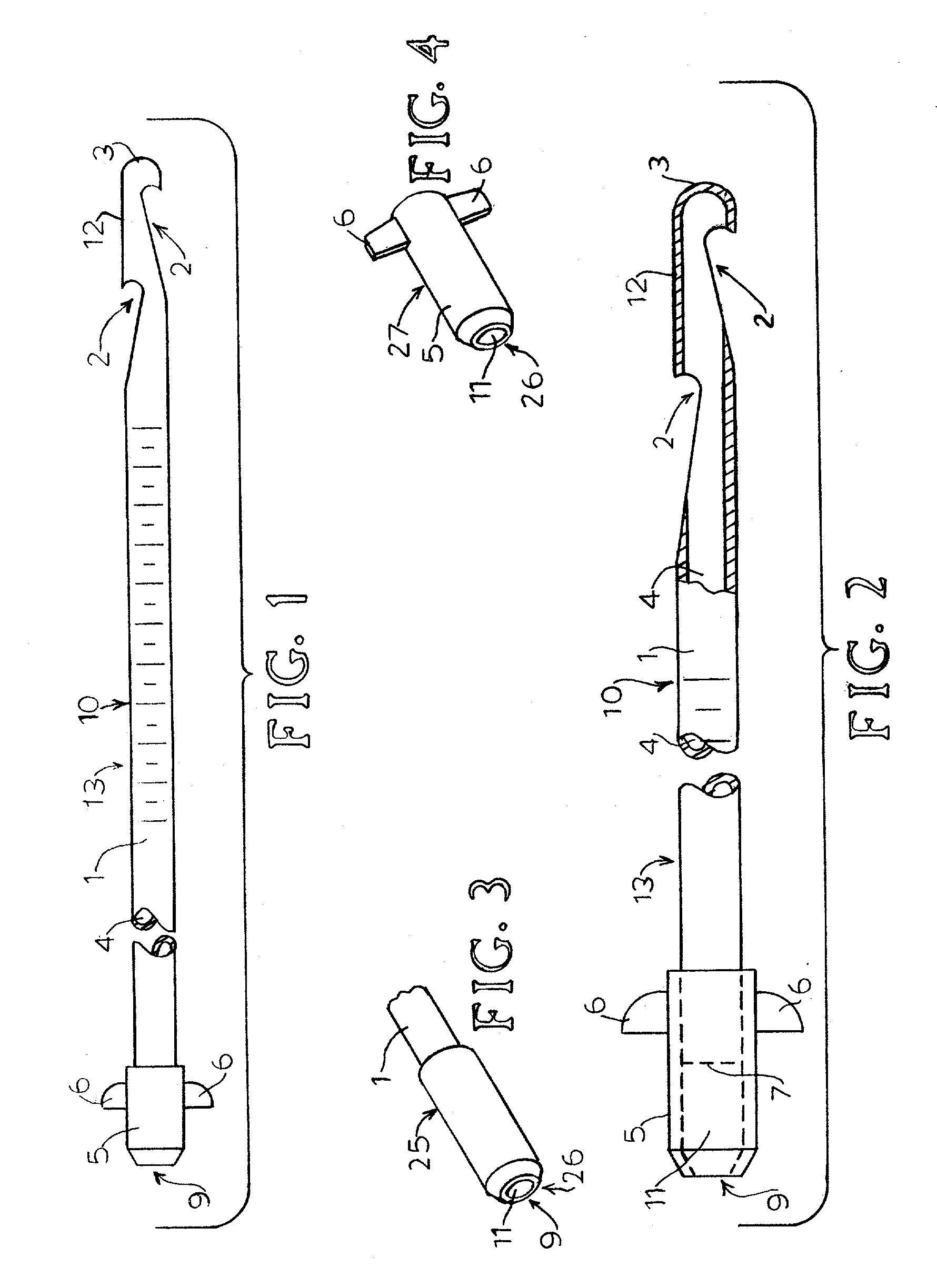Body tissue aspiration cannula
a cannula and body tissue technology, applied in the field of surgical aspiration cannula, can solve the problems of whistle cuts not as desirable, cannula kink or deform at either of the apertures, and is difficult to achieve such insertion without using a uterine dilator
- Summary
- Abstract
- Description
- Claims
- Application Information
AI Technical Summary
Problems solved by technology
Method used
Image
Examples
Embodiment Construction
[0030] Polypropylene copolymer Profax.RTM. SR256M (Basel Polyolefin Company) is selected for the tubular portion of a body tissue aspiration cannula. SR256M has a flexural modulus of 140,000 psi using ASTM D790 at 1% secant, 0.05 in / min and using Method A. Further, it has a Rockwell hardness of 69, a processing (melt) temperature of 475-525.degree. F., a melt flow rate of about 2.0 g / 10 min and a tensile strength at yield of 4000 psi. The polymer is also steam and chemically sterilzable. The tube is approximately 9 cm long, 7 mm in diameter and has a wall thickness of about 75 mm. A hub portion is injection molded onto the tubular portion suitable for attaching to a manual vacuum (aspiration) device such as a vacuum syringe. The hub has opposing grip wings as in FIG. 4 and is made from Profax SR549M polypropylene copolymer. The distal end is sealed and two aspiration apertures cut, whistle style in the distal end of the tubular portion, to form a cannula as embodied in FIGS. 1 and 2...
PUM
 Login to View More
Login to View More Abstract
Description
Claims
Application Information
 Login to View More
Login to View More - R&D
- Intellectual Property
- Life Sciences
- Materials
- Tech Scout
- Unparalleled Data Quality
- Higher Quality Content
- 60% Fewer Hallucinations
Browse by: Latest US Patents, China's latest patents, Technical Efficacy Thesaurus, Application Domain, Technology Topic, Popular Technical Reports.
© 2025 PatSnap. All rights reserved.Legal|Privacy policy|Modern Slavery Act Transparency Statement|Sitemap|About US| Contact US: help@patsnap.com


